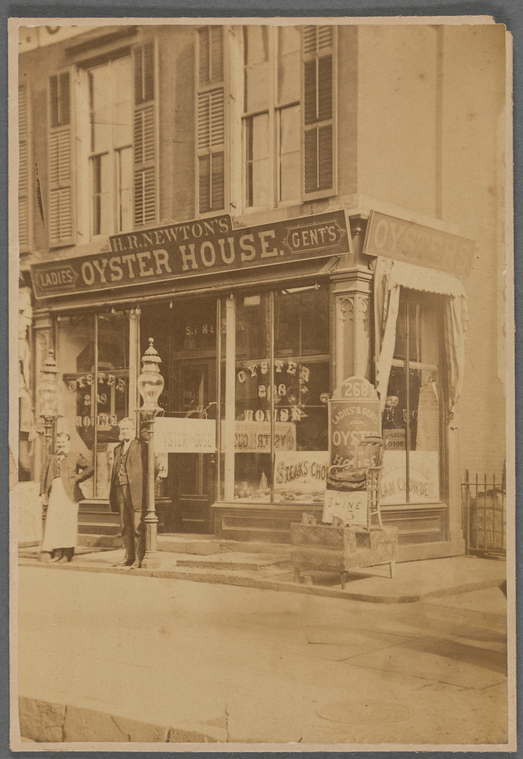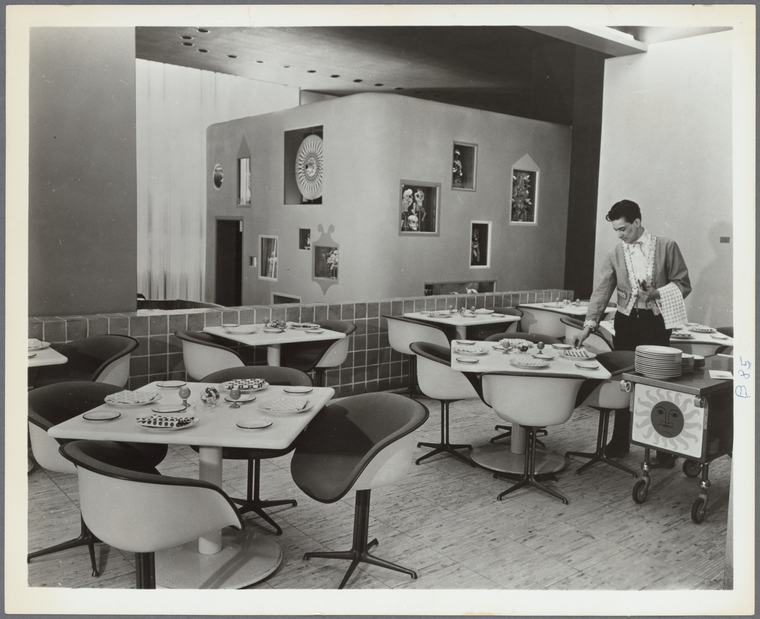Eating at a restaurant is a different experience than eating in your own home. This page includes historic etiquette guides, business records, menus, and papers from a New York restaurateur.
Etiquette
The Rules of Civility
Antoine deCourtin The Rules of Civility; or, Certain ways of deportment observed in France, amongst all persons of quality, upon several occasions. Translated out of French. The quintessential French guide to manners at the table translate for an English audience.

Le Maître d'Hôtel Français, or, Parallel of ancient and modern cuisine
Marie Antonin Carême's Le maître d'hotel français, ou, Parallèle de la cuisine ancienne et moderne inlcudes 8 folded plates depicting table settings and plans for grands buffets.
Menus
New York Public Library menu collection
Created from the collections of Miss Frank E. Buttolph and W. Dieter Zander, as well as from individual acquisitions, the NYPL menu collection covers the history of eating and the evolution of the printed format. Over 19,000 can be researched in the Library's Digital Collections.
Joseph Mitchell papers
Among other things, Mitchell was a documenter of New York culture. His papers include collections of menus, business cards, and food labels.
Restaurants
Robert F. Byrnes collection of automat memorabilia
The bulk of the collection pertains to the Horn & Hardart Company of New York. The collection contains administrative records, legal documents, financial records, printed material, ephemera, and photographs of the Automats in New York City and the surrounding area.
H. R. Newton's Oyster House ledger and photographs
Hannah R. Newton ran an oyster house at 268 Sixth Avenue, New York City, from the late 1870s to the mid-1890s. Her husband, an oyster dealer, also farmed in Ronkonkoma, Long Island. The collection consists of a ledger recording accounts with suppliers of clams, oysters, meat and other provisions in Manhattan and on Long Island; customers' tabs for meals; and cash expenditures.
Lüchow's Restaurant reservation books
Lüchow's Restaurant was located at Union Square in New York City. Lüchow's was popular for serving traditional German food and beer, as well as holding special event banquets. This collection consists of two reservation books: one for general reservations; and one for special banquets and dinners. Both reservation books list diner names, location of reserved tables, size of party, and time for dates in the 1940s and early 1950s.
Joe Baum papers
Joe Baum was the celebrated restaurateur responsible for some of New York City's most well-known restaurants during the period of the 1950s-1990s. Materials in the collection include business correspondence, memoranda, and reports; publicity materials, menus, photographs, and scrapbooks documenting the work of Baum.
Kay Zakariasen Greek Diners collection
Kay Zakariasen is a New York City-based photographer and magazine editor. The collection holds materials created by Zakariasen for a 1976 photo-essay about Greek restaurant workers in New York City. Her files hold 400 color slides, copy negatives, photocopies, interview transcripts, and research compiled for the project.
Fifth Avenue Hotel records
The Fifth Avenue Hotel Collection consists of volumes of ledgers and journals, 1859-1891, kept by the chef and/or kitchen staff of the hotel. These volumes give detailed accounts of all daily kitchen expenses. Among these books are liquor expense ledgers, lists and addresses of vendors, payments of items broken or damaged by employees and bank deposits and payments.
New York World's Fair 1939 and 1940 Incorporated records
New York World's Fair 1964-1965 Corporation records
The World's Fairs held in New York introduced millions to international and regional cuisine. Many states and countries had pavilions which included notable fare, and many corporations also operated restaurants. In 1964, Americans had their first taste of Belgian waffles and falafel. In 1939, Americans were introduced to French-style service.


